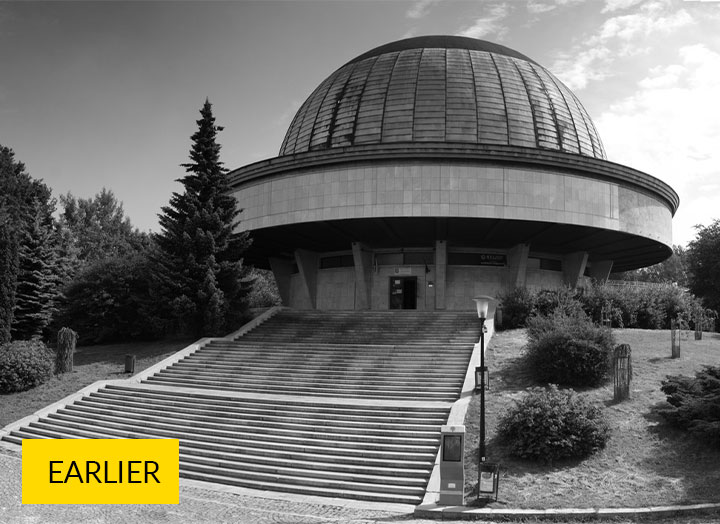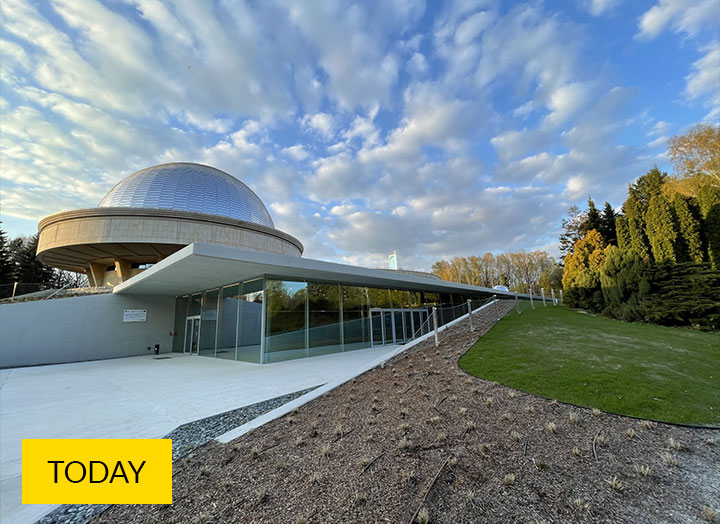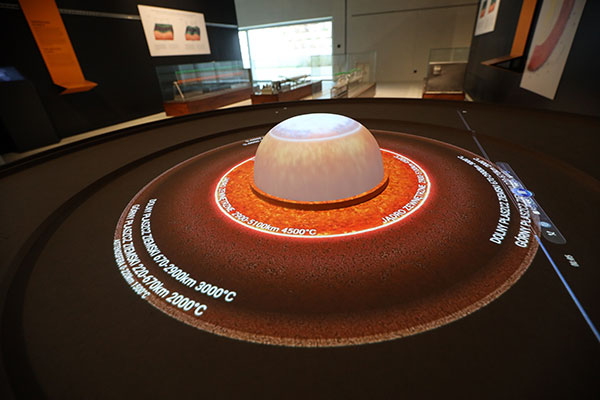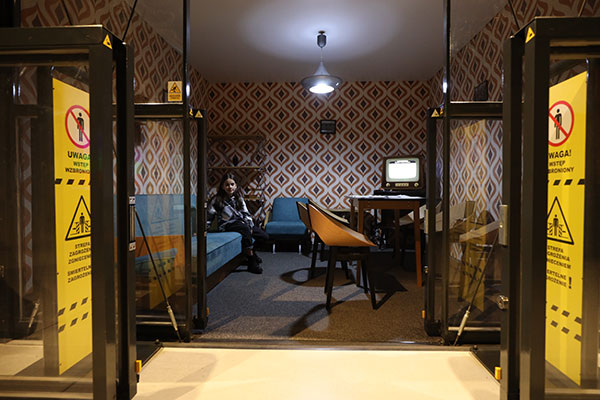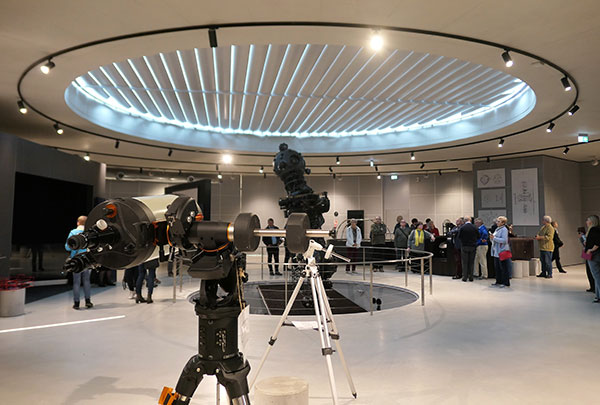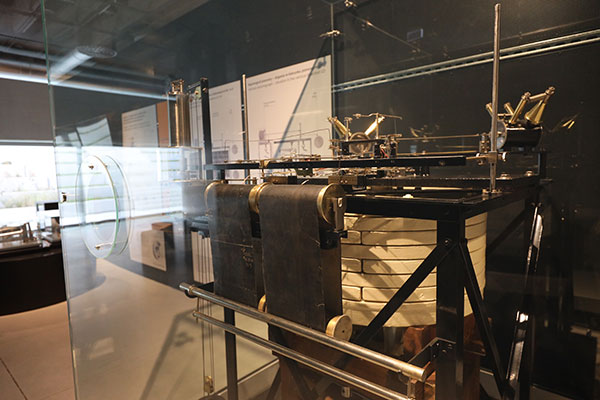Closer to the stars
Silesian Planetarium – a famous landmark of the region. A place where the stars are at your fingertips. Built in the early 1950s, the building has undergone a fascinating metamorphosis. The original design by a Cracow-based architect Zbigniew Solawa has been enriched with modern underground exhibition spaces, which now make the Silesian Science Park. Today, you can not only see millions of stars here, but also experience an earthquake or fly into space.
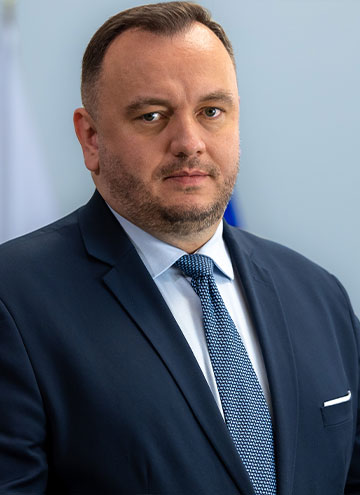
Jakub Chełstowski
Marshall of the Silesia Voivodeship
The Silesian Planetarium has been giving the residents an opportunity to discover the secrets of the universe for nearly 70 years. The futuristic building located in the heart of the Silesian Park has remained one of the most distinctive landmarks of the Silesian province since 1955. Today, it is not only the oldest and largest facility of its kind in Poland, but also one of the most modern planetariums and astronomical observatories in Central and Eastern Europe.
The authorities of the Silesian Voivodeship had been well aware of the enormous potential of the facility, both educational (as the services offered here go far beyond the school curriculum) and recreational (it is a perfect place of leisure to residents). Thus, they decided to include the Planetarium in the priority non-competition projects of the Regional Operational Program of the Silesian Voivodeship for 2014-2020. The expansion and modernization of the facility was one of the region’s largest investments, which would not have been possible without the enormous support in the form of European Funds. The design work allowed the facility to expand its activities and include scientific content in seismology, geography and meteorology, and the Planetarium itself was named the Silesian Science Park, increasing the region’s educational potential and opportunities for residents to gain knowledge and improve their professional skills. The scale of the work can be seen in the value of the investment, which reached almost PLN 150 million with more than 99 million in the form of support from the European Union.
The facility is especially proud of an ultra-modern projector displaying images in resolution higher than 8K, which is located in the center of the projection room and which perfectly emphasizes the innovative nature of the place. It allows to display up to a hundred million stars during one screening. The panorama of the cities surrounding the Planetarium, which was made with the help of new technologies, returned to the main hall. In addition, visitors to the Silesian Science Park are able to feel the effect of an earthquake and the conditions in different climate zones, or take a simulated flight into space.
A visit to the Silesian Planetarium offers a chance of a one-of-a-kind journey through the boundless space of the cosmos in the place where science meets intellectual entertainment and history touches modernity. Visitors can interact with modern technology in futuristic spaces, enjoy shows and learn through observation and experience. I hope that the facility will inspire young people to study and help them find answers to all their questions. The Science Park is also a perfect place to organize interesting lessons during which the cosmic world will be at students’ fingertips.
I believe the facility will serve people not only from our province for decades. The renovated Planetarium is now a jewel in the Silesian crown that will surely attract tourists from other parts of the country.
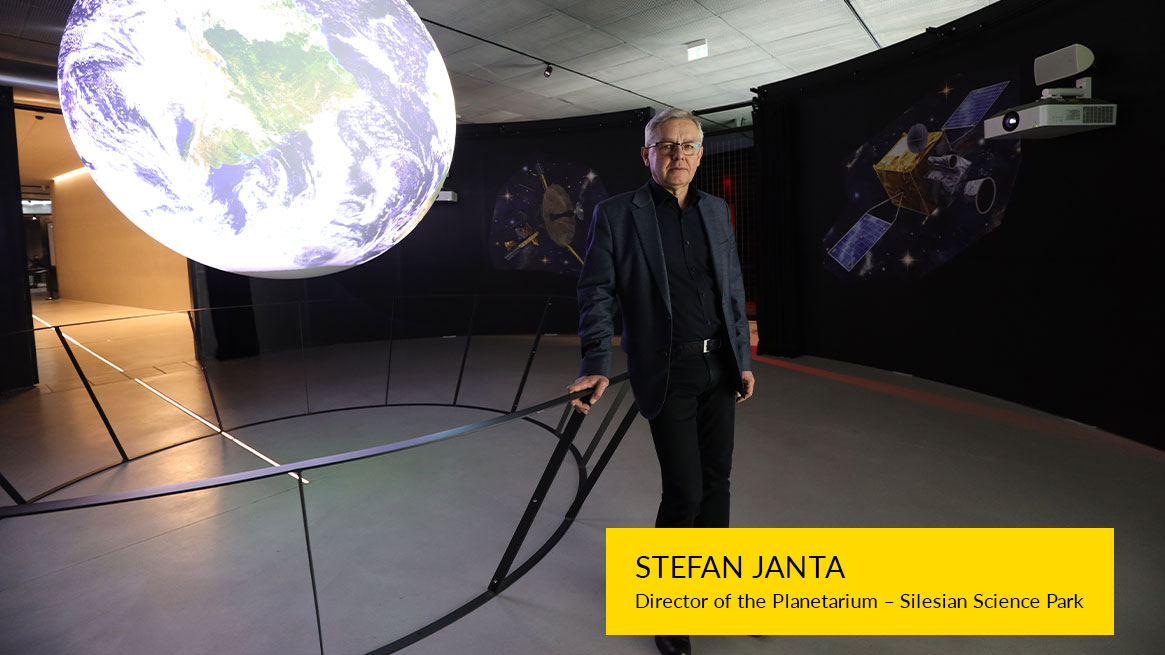
The idea to expand the Silesian Planetarium into a science park was born many years ago. We were fully aware of the fact that modern presentation of science had its technological requirements. Ideas for some of the installations originated in the early 2000s. However, we lacked resources. It was only when the Marshal’s Office of the Silesian Voivodeship became our governing body that we were able to proceed with such a large investment.
The reconstruction consisted not only of renovating the historic building of the Silesian Planetarium, but also expanding the facility to include exhibition halls. In order not to disrupt the classic shape of the building, most of the new developments were located underground. This was the biggest challenge for the designers and later for the builders because the old building had to be stabilized before excavation.
Planetarium – Silesian Science Park is a new institution rooted in tradition symbolized by the classic Zeiss projector, now located in the central part of the astronomy hall. In the facility, you can take a walk through a three-dimensional digital model of the solar system, see the detection of muons falling into the Earth’s atmosphere, or see what space looks like in infrared. Right next door, there is a large exhibit dedicated to geophysics. In the simulator, you can experience an earthquake or different types of climates on the planet, see real lightning, watch how rain and tornadoes are formed, or feel what it’s like to be a weatherperson. However, the most popular attraction are space flight simulators. Five capsules equipped with VR goggles are taking passengers on a flight toward the International Space Station. The main screening room has also been remodeled. The Silesian Planetarium has now the world’s newest projection system, capable of projecting more than 100 million stars and any moving image in the sky at True 8K resolution.
The Planetarium is one of the symbols of the region – that’s why it is unique. It has always been a place where we could get a little closer to the stars. In this respect, our role has not changed – our mission is still to inspire curiosity about the world around us. Now we have excellent tools to do this. Before the renovation, the Silesian Planetarium was visited annually by about 160,000 people. Now this number has exceeded 120,000 in just five months following its opening in June.
Say it the Silesian way:

gwiozdy:
stars

miesionczek:
moon

slecieć:
fall down
Project:
Planetarium – Silesian Science Park Modernization and expansion of the Silesian Planetarium in Chorzow
Beneficiary: Silesia Voivodeship
Project value: approx. 160 million PLN
RPO SV co-financing: approx. 99 million PLN
Implementation period: March 2016 - November 2019






